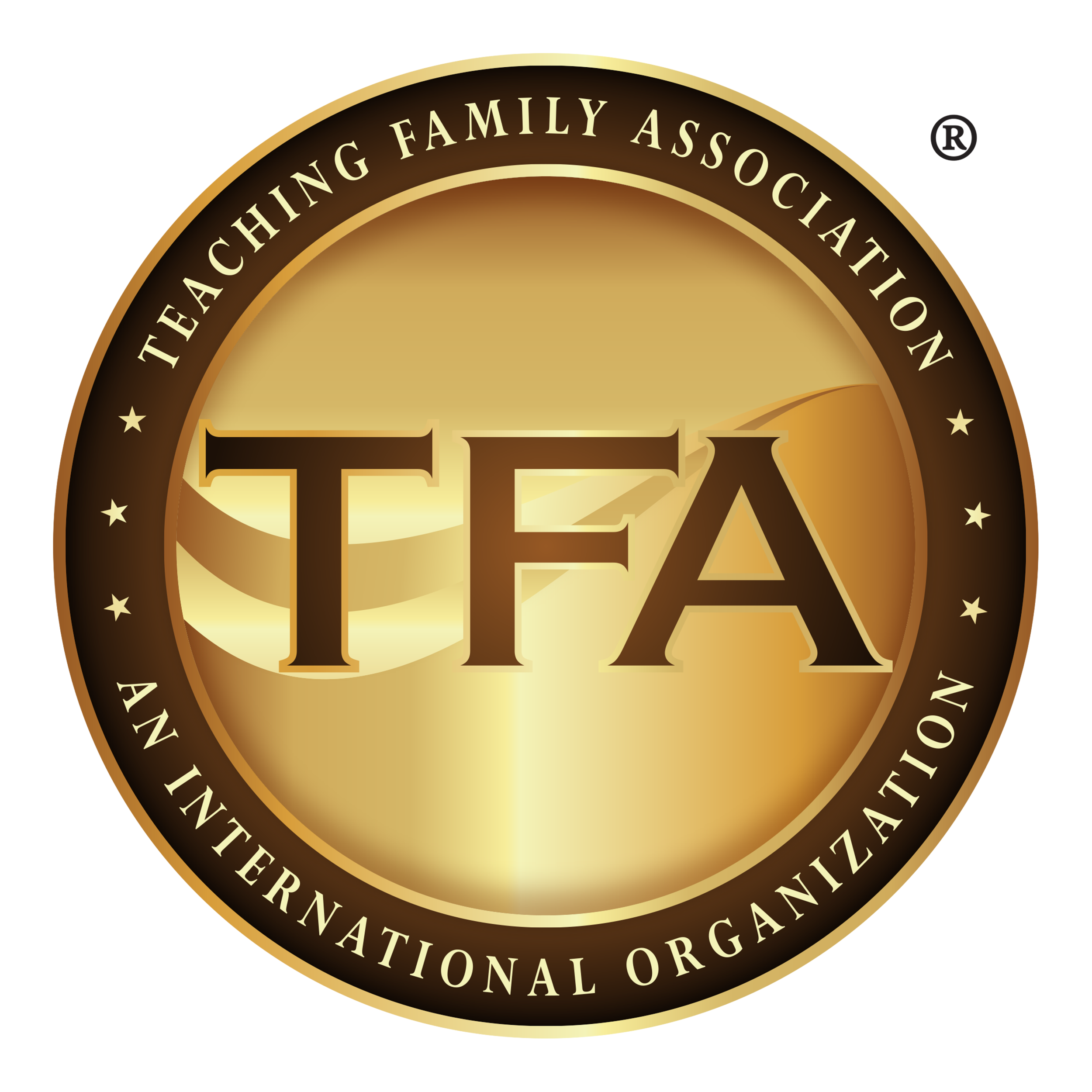
Programs and services accredited by the Teaching Family Association provide a full comprehensive continuum of care:
wraparound and aftercare
supported living and residential habitation
schools: charter, special education, alternative, and therapeutic boarding
shared family care
qualified residential treatment programs (QRTPs)
Psychiatric residential treatment programs (PRTPs)
multi-purpose juvenile homes
kinship care
intermediate care facilities
in-home and home-based family prevention
indigenous specific support
independent and transitional living
group and family care
foster care, therapeutic foster care, foster-to-adopt, treatment foster care
emergency shelters
early childhood, early prevention and intervention
DD and ID (Development and intellectual Disability)
day treatment
crisis intervention and assessment centers
child and adolescent psychiatric hospitals
Founded in partnership in 1967:
National Institutes for Mental Health, Department of Human Services and the University of Kansas.
“The Teaching Family Model provides a robust and transparent framework that enables the consistent implementation of established and effective care and treatment principles. The TFM Standards require individual, collective and cultural sensitivity and tailoring, which enables their effective application across multiple populations. The beauty of the TFM is the balance between its simplicity and the depth to which it can be responsive to adaptation, in order to truly meet the needs of the people served.”
Louisa Webster, Kaitohu Hinengaro / Clinical Director
Kia Puāwai, New Zealand
“We use the Teaching Family Model at Boys & Girls Homes of North Carolina because it works! After trying other models, we fully came back to TFM because of its trauma-informed culture of "catching youth being good", and its empowerment of our teachers, foster parents, and residential staff. We saw immediate results: less turnover, a significant drop in critical incidents, and happier kids. The Teaching Family Model is a win-win across the board.
Marc A. Murphy, LCSW, President & CEO, Boys & Girls Homes of NC, Inc.
North Carolina, USA
The Teaching-Family Model
The Teaching-Family Model (TFM) is a philosophy and practice of care and treatment that prioritizes therapeutic relationships with caregivers as the primary conduit of effective treatment in supportive family-style settings.
Family-style relationships are seen as essential to healthy development of social, relational, and interpersonal skills. The TFM is a strength-based, comprehensive, and trauma-informed model of care that builds positive change while remaining focused on the holistic development of the person served.
The Model is rooted in cognitive behavioral theory and can be used with children, youth, and adults with a range of diagnoses and symptoms, as well as with those who have experienced significant trauma, maltreatment and loss.
Evidence-based & Trauma-informed
The Teaching-Family Model is an evidence-based approach which is fully integrated at both the individual and the organizational level. It provides effective individualized and trauma-informed treatment services to children, youth, adults, and families.
Through peer-reviewed research and clinical practice, the Teaching-Family Model is recognized to be cost-effective, replicable, and highly effective for all participants.
FFPSA: FEDERALLY APPROVED ACCREDITOR
TRAUMA-INFORMED TREATMENT MODEL
Replicable through evidence-based practice
Implementation Science
transparent and accountable
EnsurES Persons AND FAMILIES Served have Voice and Choice
MovES Theory into Practice
100% consumer engagement
Implementation of the Teaching Family Model: Professionalizing all staff via a rigorous framework of Integrated Systems and Evaluation for Model Fidelity at both Practitioner and Organizational Levels.
Assures Quality of life
improves Outcomes
Consumer and Client Satisfaction
mitigates risk
Consistency
professionalizes direct care staff, team
increases Staff Stability
transparent and accountable
Fidelity
INDIVIDUALIZED Person-Centered Services
Organizational Management
adapts to needs and environment
“The integrated systems of the Teaching-Family Model have become the connective tissue for our organization. They are the breath that sustains our organizational life and keeps us healthy and strong.”
learn more and stay up-to-date
follow us online
We’re always sharing articles, inspiration, tips and more across our site and on social media. If you’re a member or just interested in learning more about our model, we invite you to follow along with us on any of our platforms!





